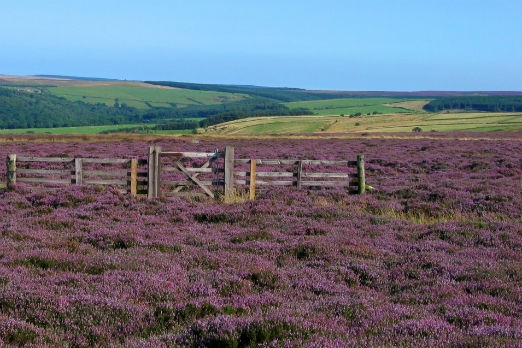I’m getting increasingly worried about the future of England’s ten National Parks and 33 Areas of Outstanding Natural Beauty (AONBs).
National protections for National Parks? What a load of potash…
 Lilac heather on the North York Moors
Photo: © ronfromyork/Shutterstock.com
Lilac heather on the North York Moors
Photo: © ronfromyork/Shutterstock.com
 Over the years, I’ve heard of many development threats to these landscapes for energy, transport and road infrastructure and with a few applications for tourist attractions thrown in. You start to get a feel for what the outcome of major planning applications may be - particularly in National Parks and AONBs, which are deemed to have the highest level of planning protection from major development (called the ‘Major Development Test’). So we had high hopes of the proposal for the world’s largest potash1 mine in the North York Moors National Park being stopped in its tracks by the National Park Authority (NPA).
Over the years, I’ve heard of many development threats to these landscapes for energy, transport and road infrastructure and with a few applications for tourist attractions thrown in. You start to get a feel for what the outcome of major planning applications may be - particularly in National Parks and AONBs, which are deemed to have the highest level of planning protection from major development (called the ‘Major Development Test’). So we had high hopes of the proposal for the world’s largest potash1 mine in the North York Moors National Park being stopped in its tracks by the National Park Authority (NPA).
After a long winded game of cat and mouse (spanning a couple of years), a special meeting of the North York Moors National Park Authority (NYMNPA) took place at the end of June this year. In major planning cases like this, the NPA planning staff will prepare a report considering all the facts and making a recommendation for what they believe the decision should be. An ‘open recommendation’ had been made in this case, which means that they had set out the pros and cons but left the members of the NPA to weigh it up before voting whether to approve or reject the application. What I found really interesting was that the officers concluded:
"The policy conflict with the Development Plan and national policy is such that the proposal does not represent Exceptional Circumstances, which is the highest bar that planning policy requires. It is therefore considered that the economic benefits and extent of the mitigation/compensation offered through planning obligations do not outweigh the extent of the harm and clear conflict with the development plan. The greater public interest is considered to be that of the statutory National Park purposes which protect the North York Moors for the benefit of the nation.
'"In reaching this view, officers acknowledge the unique role of the National Park Authority, which does not have a direct economic development purpose but which has at the core of its planning role, the statutory responsibility to conserve and enhance the North York Moors for the enjoyment of present and future generations."
Reading that you’d assume that a nationally significant development in a nationally significant landscape would be turned down by the guardians of the North York Moors – wrong! The application for the world’s largest potash mine, visible from 12% of the National Park, was approved by a single vote presumably because it is seen to be a ‘magic bullet’ for the regeneration of the local economy. Of course, jobs are needed but that should not be at the detriment of a National Park. There are also concerns about how the development would damage the tourism economy in the area – and the jobs that go with it.
CPRE has been part of a coalition of national and local organisations, led by the Campaign for National Parks (CNP), who urged the NYMNPA to refuse the application. A representative from our county branch CPRE North Yorkshire was part of that group and spoke alongside CNP at that fateful NPA meeting in June. Many of the organisations had written to the Department of Communities and Local Government (CLG) to say that the potash mine proposal was so significant and complex that it should be ‘called in’ by the Government for a fair and transparent Public Inquiry. The most recent statement on what would be considered for a call-in was issued by former Planning Minister Nick Boles in 20122. This set out six types of circumstances, the application of any one of which would favour a call-in. The potash case met three out of these six criteria: it conflicted with national and local policies, would have significant effects beyond its immediate locality, has given rise to substantial cross-boundary and national controversy.
Of course the Government would call in this application, surely? They had time before the official decision notice is issued by the National Park Authority in late September. The Conservative manifesto had pledged ‘Stronger protections for our natural landscapes, including maintaining national protections for National Parks and AONBs’. So this application, the first major test of protection for our National Parks and AONBs since the General Election, would surely be called-in for scrutiny. But it was not. CLG wrote to the relevant local authorities last week to say that they did not feel the decision met the criteria for call-in and that it is a decision best made locally.
In my view, one shared by my colleagues, CNP and other organisations, is that it’s easy for the Government to say it will protect our National Parks and AONBs but when it comes to choosing between protecting the nation’s finest landscapes and the economy, they seem happy to sacrifice natural beauty for short term, often illusory, economic gain. What will the future of our finest landscapes be if this Government can be so easily swayed?
1. Potash is used as a fertiliser
2. Statement by former Planning Minister Nick Boles
Find out more



